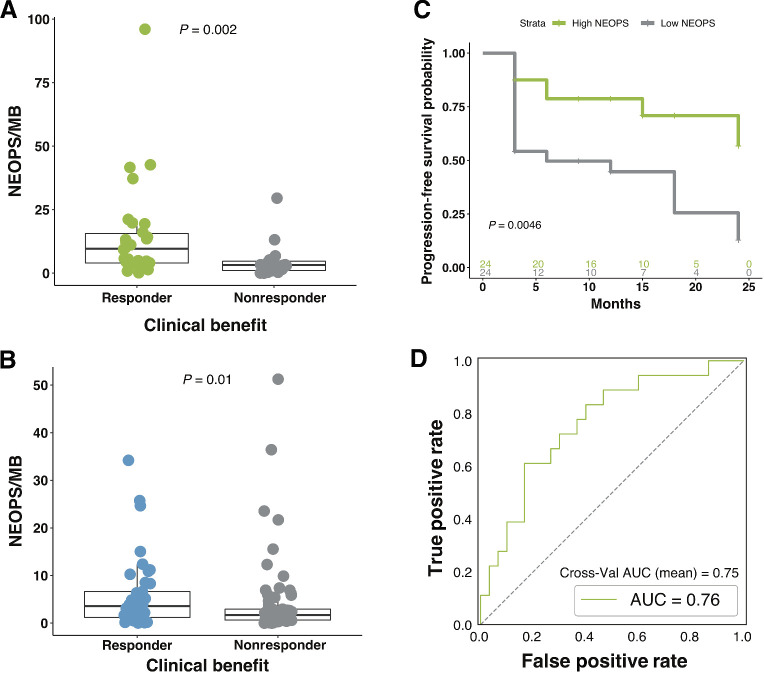Figure 5.
Composite neoantigen presentation score is more strongly associated with response to therapy than neoantigen burden alone. A, Composite NEOPS is significantly higher in responding patients compared with nonresponding patients (n = 48; MWW; P = 0.002). B, Similar findings were observed in the validation cohort, with high responding patients presenting significantly higher NEOPS (n = 110; MWW; P = 0.010). C, Significantly longer PFS was observed in patients with high NEOPS when compared with those with low NEOPS (two-sided KM log-rank test; P = 0.0046). Boxplots in A and B cover the IQR from the 25th percentile at its lower bound to the 75th percentile at its upper bound, with median indicated by a horizontal line. The upper whisker includes the largest value within 1.5× IQR above the 75th percentile. The lower whisker includes the smallest value within 1.5× IQR below the 25th percentile. D, AUROC for the NEOPS model was 0.76, and the cross-validation AUROC mean was 0.75 (log-likelihood ratio P = 0.0057).

